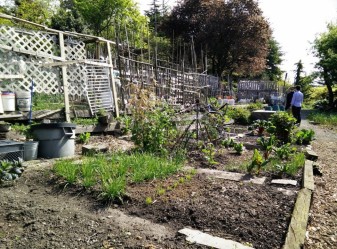In Seattle one of the major sustainable trend taking hold in the urban center are community gardens. Community gardens can offer many benefits to a city in terms of making it more sustainable. For instance community gardens can often times help spur the local economy providing a source of income for whom the farm serves.
Providing locally grown food is also beneficial in reducing greenhouse gas emissions by reducing the amount of fossil fuel used to transport food from other regions.
The Danny Woo Children’s Garden is located in the international district adjacent to the 5 free way and nested between Yesler Way and S. Main Street. The garden serves to unite the community in the international district by bridging the gap between older immigrants and the children of the community.
Agricultural practices developed during the industrial era has disconnected us from our food system and the average person does not know where his or her food comes from. The community garden such as the Danny Woo Community garden helps to reconnect traditional values and practices which just so happens to be sustainable and healthy.
When people talk about sustainability they often refer to technical approaches such as reducing GHG but what is often left out is the social aspect of sustainable systems. The Danny Woo Children Garden not only reduces GHG but it also improves and strengthen social fabric making the community more desirable to live in. A system can be sustainable but if it does not address social




